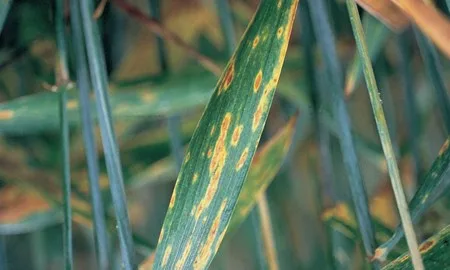
How can you improve disease management, particularly Septoria this spring? We asked six experts for their top tips.
Author
| 3rd December 2019Tags
Six steps to improve Septoria management in wheat
Sequence Growth Stage Development
"When considering variety choices consider development as well as disease ratings and gross output. We aim to spread leaf development across our area to achieve a sequenced approach to growth stage development. What we don’t want is several fields reaching a key growth stage together and insufficient time to treat them. Also, put susceptible varieties in accessible fields."
- David Fuller, Coldstream Mains
Be prepare to switch nozzles
"Changing nozzles might be an inconvenience but controlling diseases such as Septoria means you have to completely protect the target leaf. We find using forward and rear facing nozzles improves leaf coverage. It’s also worth considering water volumes, particularly where canopies are well formed. It’s important that the spray pattern penetrates the plant base for comprehensive protection."
- Richard Peck, Sentry Farming, Dorset
Select rainfast fungicides
"Make the most of rainfastness in areas of higher rainfall or altitude. Products like the Xpro range allow you to stay out in the field that bit longer if catchy weather is forecast and can be the difference in completing the field or not."
- James Mayes, Sentry Farming, Essex
Dissecting plants is worthwhile
"It’s important to fully protect the target leaf so dissecting plants to correctly identify growth stage is essential. Tips to do this can easily be found online."
- Richard Cromie, Crop Management Partners

Consider wheat blends
"At the moment we still have the chemical arsenal to control Septoria. But for those in high risk areas the idea of blending varieties might find favour in the future. Rather than fields sown with a single resilient variety it might pay dividends to use the varying gene resistance of two or three resilient varieties together. It’s another layer of risk management to reduce field pressure and spread of the disease within it."
- Patrick Stephenson, AICC
Measure green area index
"Pay attention to canopy management. Recording temperature and rain events on the run up to spray timings is a guide to the severity you might face, and are measures used in forecasting tools. But it might be advisable to measure biomass too. We know at GS39 the ideal green area index is 6.0. Growers are looking to develop early biomass to achieve that then protect it from diseases to maintain healthy canopy through the grain fill period. Thin crops are less likely to achieve their yield potential and overly dense canopies are conducive to disease development."
- Julie Smith, ADAS